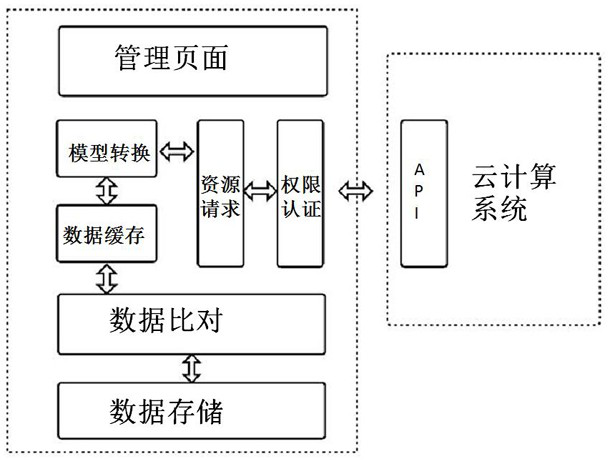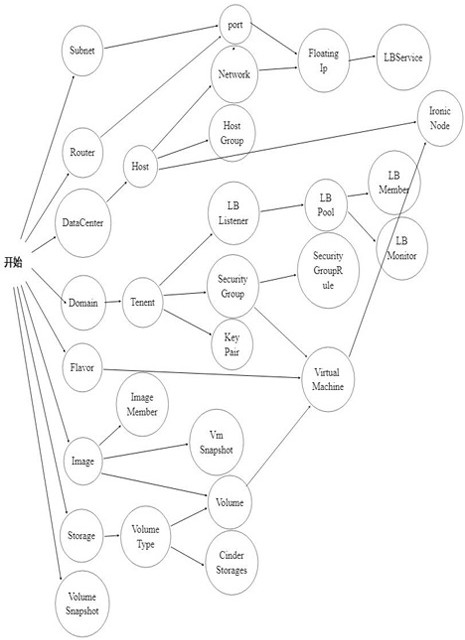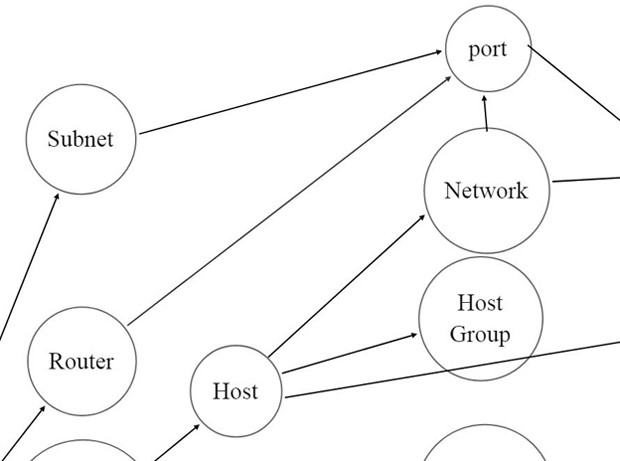Resource data reading method suitable for cloud computing system
A resource data, cloud computing technology, applied in the field of cloud computing systems, can solve the problems of system resource waste, low efficiency, waste of time, etc., and achieve the effect of improving operating efficiency
- Summary
- Abstract
- Description
- Claims
- Application Information
AI Technical Summary
Problems solved by technology
Method used
Image
Examples
Embodiment 1
[0049] Embodiment 1, a resource data reading method suitable for cloud computing systems, in terms of system construction logic, such as figure 1 shown. figure 1 The one on the far right is the cloud computing system, which can be the openstack cloud computing system or the eloud cloud computing system. There are no specific restrictions on the platform type of this technical solution, but it should be noted that these platforms are required to provide corresponding APIs or SDKs resource data can be obtained. In this embodiment, the openstack cloud computing system is used, which contains API for communication. API is Application Programming Interface, application programming interface.
[0050] The block diagram on the left is the management client of this embodiment, and the client is a program, which can be programmed by a software designer through the JAVA language in the prior art and realize the functions listed in this article. It contains the admin pages on the fron...
Embodiment 2
[0104] In embodiment 2, on the basis of embodiment 1, the method of data comparison and batch operation is added. This link exists in step S05, the step of storing resources into the database.
[0105] Since resource warehousing is often the step that takes the longest time, this technical solution persists data to the Mariadb database, which involves a large number of tables. In order to reduce the number of database operations, the data warehousing operation supports batch operations.
[0106] Cloud platform resource attributes often contain multiple dimensions, and data synchronization includes creating and updating two pieces of content.
[0107] In this embodiment, each resource can be assigned a unique identifier, such as UUID. Create or update is distinguished by UUID comparison.
[0108] By comparison, if the resource already exists in the database, compare all the attributes of the resource to determine whether the resource has changed. If there is a change, it needs...
Embodiment 3
[0109] In embodiment 3, on the basis of embodiment 2, a data deletion operation is added.
[0110] The method of deletion is: compare the existing resources of the database with the resources synchronized to the cloud platform, and use the unique UUID of the resources to distinguish the data. If a certain UUID exists in the existing resources of the database, it does not exist in the resources synchronized to the cloud platform. It is judged as a delete operation.
[0111] Deleting non-existing resources has the highest priority. Deleting non-existing data can ensure the accuracy of the database and prevent exceptions when inserting and updating resources in the future.
[0112]So far, the data warehousing stage is batch warehousing, reducing the number of database links. While improving efficiency, it also achieves complete log output, recording the changes of each attribute of resources, the addition and deletion of each resource, etc.
PUM
 Login to View More
Login to View More Abstract
Description
Claims
Application Information
 Login to View More
Login to View More - R&D
- Intellectual Property
- Life Sciences
- Materials
- Tech Scout
- Unparalleled Data Quality
- Higher Quality Content
- 60% Fewer Hallucinations
Browse by: Latest US Patents, China's latest patents, Technical Efficacy Thesaurus, Application Domain, Technology Topic, Popular Technical Reports.
© 2025 PatSnap. All rights reserved.Legal|Privacy policy|Modern Slavery Act Transparency Statement|Sitemap|About US| Contact US: help@patsnap.com



